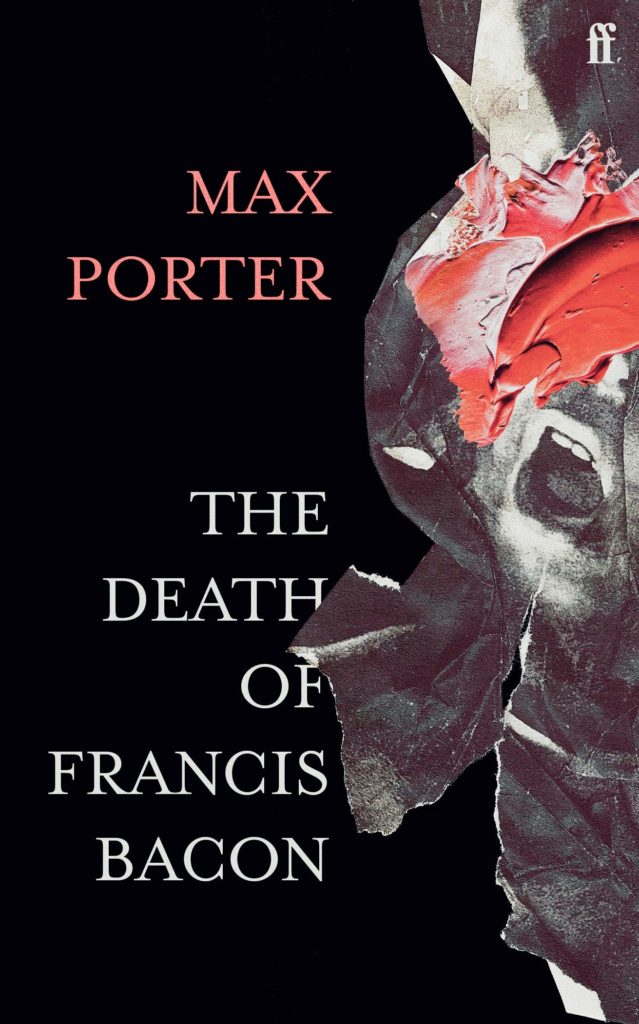Max Porter’s latest work captures often-lost intricacies in Bacon’s art, writes Luke Mark.

Preconceived ideas about what a novel or a collection of poems is likely to offer, based solely on the form in which it is delivered, are habitual — and also kind of lazy. Though I won’t fumble too directly with the daunting and messy notion of hybrid forms that this raises, it is important to note their relevance to Max Porter’s new work, The Death of Francis Bacon.
Porter has incorporated variations of form into both of his previously published novels – Crow’s flurries of associative sound in Grief is the Thing with Feathers; Dead Papa Toothwort’s ambient channelling of the village setting, and the visual spectacle thereof, in Lanny. These moments of relative expressionism and language/form interplay — usually found largely in poetry — have proved very effective in both cases, thanks to their grounding amongst the intimate headspaces of Porter’s narrators. We experience with such immediacy the emotional deterioration of certain characters because our window to them, the language on the page, begins to crack.
In The Death of Francis Bacon, Porter’s writing is skewed more consistently towards this prose poetry style. Rather than flitting between recognisable forms, giving the sense of a relative safety in some ‘home’ style of narration, this new work instead exists in the area between the forms the writer has previously straddled, without entirely being either.
The Death of Francis Bacon frames the artist’s final days through his creative process. The seven sections of the book are titled in the mode of physical works, which initially gives the writing the feeling of ekphrasis. But the bulk of the writing focuses on process rather than specific images or works, setting this apart from a simply descriptive act. We are given Bacon’s mind in a state of confusion – one that feels simultaneously like an inherent part of the creative process and a desperate symptom of dying. Each section tracks an attempt to make sense of memory and sensation, bursting with the energy of creation and stumbling over the failures of language in turn. This feels appropriate, considering that Bacon’s figures often appear to be writhing in place, attempting to scream their way off the canvas, or else to dissolve out of the foreground and right through the back. It is testament to the writing that this uncanny sense — of something living being forced into stillness — is present here.
Porter’s style is distinctly his own, but the concerns of the piece are those he shares with Bacon. Recognisable figures and work movements from the painter’s life do crop up throughout, but the thrust is towards the things that lie at the core of his work, rather the specifics of his life. By presenting these themes in his own medium, Porter gives us a kind of alternative route to the same end.
The themes tackled have the potential to raise all the usual problems abstract subjects – death, love, lust, and all the stuff we call ‘big’ – can cause in writing. A washiness, a lack of anything to hold in our minds, is a common symptom of tackling such subjects – particularly in a piece as short and relatively prosaic as this. Luckily, Porter’s knack for the tangible (evident going back to the opening of his first novel, when a large black feather on a child’s pillow brings grief immediately into our own fresh sheets) seems to be intact. The Death of Francis Bacon is full of such tangibility: sounds clang just out of frame, smells emanate from sources edible and inedible, we feel the physicality and weight of bodies and furniture.
In some ways, The Death of Francis Bacon has the feeling of homage, but it does the work more justice to think of it an alternative to traditional art criticism. Max Porter writes towards shared themes and around, rather than through, a romanticised life. By disregarding formal constraints, he manages to capture some of those intricacies of Bacon’s work which are (perhaps necessarily) lost in its usual criticism, giving his readers an opportunity to appreciate it anew.
*
‘The Death of Francis Bacon’ is out now, published by Faber. Order a copy via bookshop.org, or direct from your local independent bookshop.
Luke Mark is a musician based in London, and is a member of Black Country, New Road, whose debut album is out now. You can follow him on Twitter here.